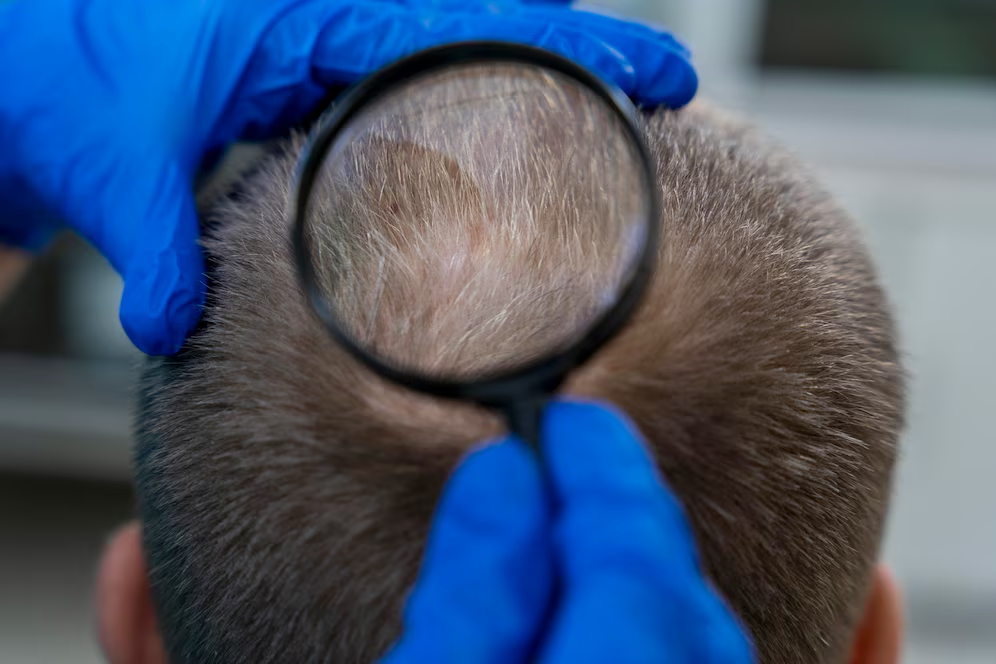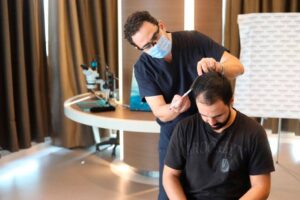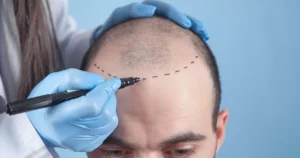Curious about why your hair grows—or doesn’t? Here’s a breakdown of the biology behind hair growth and loss.
What are the stages of hair growth, and why are they important?
Hair grows in a natural cycle with three key phases:
- Anagen (Growth Phase) – This phase can last 2–7 years and determines how long your hair grows.
- Catagen (Transition Phase) – A short 2–3 week stage where the hair follicle begins to shrink.
- Telogen (Resting Phase) – Lasts about 3 months before the hair sheds and a new one begins to grow.
Understanding this cycle helps explain why not all hair grows at the same rate or length and why shedding is a normal process.
What factors affect how fast or thick hair grows?
Several things influence your hair’s growth rate and density:
- Genetics: Your DNA largely determines thickness, curl pattern, and growth rate.
- Age: Hair growth slows and follicles shrink with age.
- Hormones: Androgens like DHT can shorten the anagen phase, leading to thinning.
- Health & Medications: Thyroid issues, iron deficiency, or certain medications can disrupt the cycle.
- Stress: Chronic stress can trigger excessive hair shedding and slow regrowth.
How does male or female pattern baldness actually work?
Pattern baldness (androgenetic alopecia) is caused by hair follicles becoming sensitive to DHT (a byproduct of testosterone). Over time, DHT shrinks the follicles, making hair finer and eventually stopping growth.
- In men, it typically affects the temples and crown.
- In women, it appears as overall thinning without full bald spots.
This condition is progressive but treatable with the right interventions.
Why does hair sometimes grow back thinner after shedding?
When hair sheds due to stress, illness, or hormonal changes, it may regrow thinner because:
- The follicle may shrink slightly after reactivation.
- The anagen phase may become shorter.
- Nutritional deficiencies may still be unresolved.
With proper treatment and time, hair can often return to its former thickness.
What’s the role of blood flow in hair growth?
Healthy hair follicles rely on a rich blood supply to deliver oxygen and nutrients. Poor circulation can slow growth or lead to thinning. This is why scalp massage, microneedling, and PRP therapy help stimulate regrowth — they improve blood flow to the follicles.
Is hair really “dead” once it leaves the scalp?
Yes — technically, the visible part of your hair is made of keratinized cells and is not alive. However, the follicle inside the scalp is very much alive and responds to internal and external influences. That’s why scalp care and good health are vital for growing healthy strands.
Do shampoos and topical treatments actually influence hair growth?
They can help — but only if they address underlying issues like inflammation, dandruff, or DHT buildup. Products with ingredients like:
- Caffeine – Stimulates follicle activity
- Biotin – Strengthens existing hair
- Ketoconazole – Reduces scalp inflammation and DHT sensitivity
Topical solutions like minoxidil are clinically proven to stimulate new growth in thinning areas.
What does recent research say about hair growth breakthroughs?
Scientists are exploring new frontiers like:
- Stem cell therapy to regrow hair from inactive follicles
- 3D-printed follicles for transplantation
- Genetic editing to reduce DHT sensitivity
- Exosome therapy, using cell signals to trigger hair regrowth
These advancements could revolutionize how we treat hair loss in the near future.
Final Thoughts: How can someone use this knowledge in daily life?
By understanding your hair’s biological cycle and the science behind its growth, you can:
- Choose better treatments
- Identify early signs of hair loss
- Avoid myths and misleading products
- Work with professionals to get results based on facts
Knowledge is power — especially when it comes to restoring your confidence through healthier hair.





